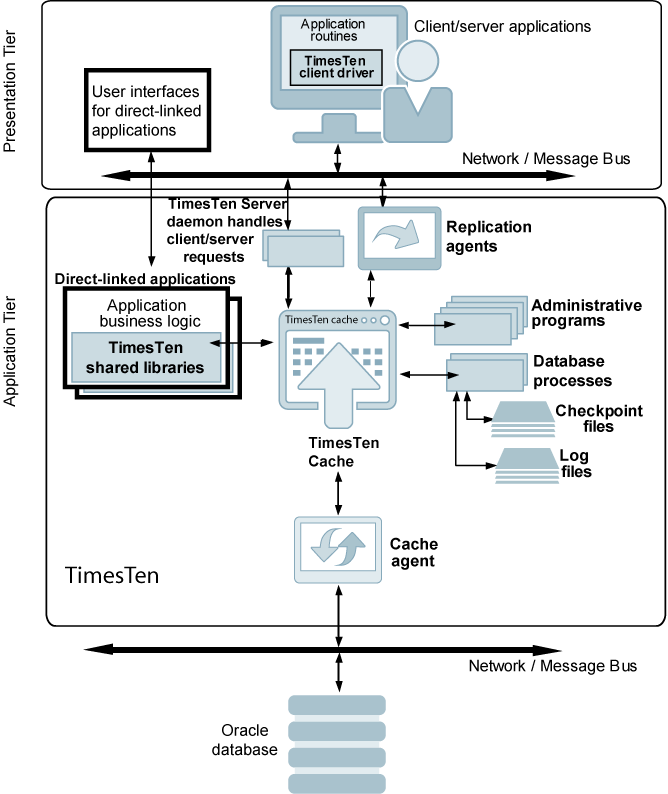Architectural Overview
The architecture for TimesTen Classic and TimesTen Scaleout are described in the following sections:
Architectural Overview of TimesTen Classic and Cache
This section describes the architecture of TimesTen Classic and cache.
The architecture of TimesTen Classic is the same as the architecture of cache except that the Oracle database and cache agent are not included. Figure 3-1 shows the architecture of cache.
Figure 3-1 TimesTen Classic and Cache Architecture

Description of "Figure 3-1 TimesTen Classic and Cache Architecture"
The architectural components include shared libraries, memory-resident data structures, database processes, and administrative programs. The application can connect to the TimesTen database by direct link and by client/server connections.
Replication agents receive information from master databases and send information to subscriber databases. The cache agent performs all asynchronous data transfers between cache groups in the TimesTen and the Oracle databases.
Architectural Overview of TimesTen Scaleout
TimesTen Scaleout enables you to create a grid that is a set of interconnected instances installed on one or more hosts. TimesTen Scaleout enables you to distribute the data of a database across this grid.
-
You can create one or more in-memory, SQL relational, ACID-complaint databases.
The architectural components for each database include shared libraries, memory-resident data structures, database processes, and administrative programs. The application can connect to the TimesTen database by direct link and by client/server connections. These components are described in subsequent sections.
-
Data instances (in which data is contained and managed) run SQL statements and PL/SQL blocks. A grid distributes the data within each database across data instances.
-
You create one or two management instances through which the grid is managed. You manage all data instances through the active management instance.
-
Set up a membership service to track which data instances are operational at any moment. The membership service consists of three or more membership servers.
-
You can connect applications to your database with full access to all the data, no matter what the distribution of the data is across the database.
Figure 3-2 TimesTen Scaleout Grid Structure

Description of "Figure 3-2 TimesTen Scaleout Grid Structure"
See TimesTen Scaleout Architecture in the Oracle TimesTen In-Memory Database Scaleout User's Guide.